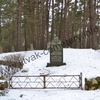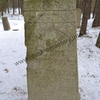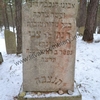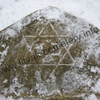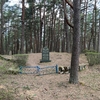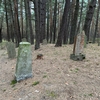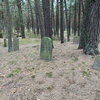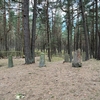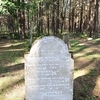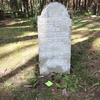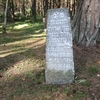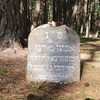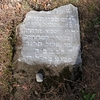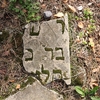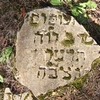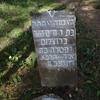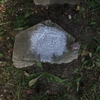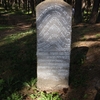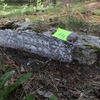EN:
It is believed that the first Jews settled in Palanga in the middle of the 16th century. In 1586, the tenant of the town of Palanga was a Jew named Kasper Samuelovich. Nevertheless, a more significant Jewish settlement in Palanga likely began after 1639, when Vladislav Vaza, the ruler of Lithuania, granted the Jews of Palanga and Gargždai the privilege of legally residing and conducting business in these towns. In 1662, about 40 Jewish families lived in the town. The wars of the early 18th century slowed down the growth of the town and the Jewish community. According to the 1756 inventory, Jews owned only 13 plots of land in Palanga. In the 18th century, a "Jewish town" began to form on the northern bank of the Rąžė stream, where a synagogue stood. In 1902, a red brick synagogue was built, and schools, Zionist organizations, and the Makabi sports club operated there. At the turn of the 19th and 20th centuries, Jews made up almost half of Palanga’s population, and their businesses – ranging from trade and crafts to amber workshops, guesthouses, and restaurants – contributed to the development of the resort.
The first Jewish cemetery in Palanga was located in what is now Palanga Park, on Jaunimas Hill. Burials there ceased in 1892 before the creation of the Tiškevičius Park.
After the fire in Palanga in 1830, burials began in a new cemetery in the eastern part of the city, behind Naglis Hill, in 1831. Burials continued in this cemetery until the middle of the 20th century.
The cemetery was destroyed.
In 1991, a black granite monument was erected in the cemetery in memory of the Old Jewish Cemetery (architect Irena Likšienė).
Translated by Shai Bagon
Photos by Sergey Kanovich, documented in 2024 September
General view photos by Donatas Gailius and M. Jakulytė, 2022.
LT:
Manoma, kad pirmieji pavieniai žydai Palangoje apsigyveno dar XVI a. viduryje. 1586 m. Palangos miestelio nuomininkas buvo žydas Kasperas Samuelovičius. Nepaisant to, tikėtina, jog gausesnis žydų įsikūrimas Palangoje prasidėjo po 1639 m., valdovui Vladislovui Vazai Palangos ir Gargždų žydams suteikus privilegiją, leidusią teisėtai gyventi ir verstis šiuose miesteliuose. 1662 m. miestelyje gyveno apie 40 žydų šeimų. XVIII a. pradžios karai pristabdė miestelio, o kartu ir žydų bendruomenės augimą - pagal 1756 m. inventorių Palangoje žydams priklausė vos 13 sklypų. XVIII a. pradėta formuoti „Žydų miesto“ dalis šiauriniame Rąžės upelio krante, kur stovėjo sinagoga. 1902 m. pastatyta mūrinė raudonų plytų sinagoga, veikė mokyklos, sionistinės organizacijos, sporto draugija „Makabi“. XIX–XX a. sandūroje žydai sudarė beveik pusę Palangos gyventojų, jų verslai – nuo prekybos ir amatų iki gintaro dirbtuvių, pensionatų, restoranų – prisidėjo prie kurorto plėtros.
Pirmosios žydų kapinės Palnagoje buvo dabartiniame Palangos parke, Jaunimo kalnelyje. Jose nebelaidojama nuo 1892 m. prieš pradedant kurti grafų Tiškevičių parką.
Po 1830 m. Palangos gaisro, 1831 m. pradėta laidoti naujose kapinėse rytinėje miesto dalyje, už Naglio kalno. Šiose kapinėse laidota iki XX a. vidurio.
Kapinės sunaikintos.
1991 m kapinėse pastatytas juodo granito paminklas Senosioms žydų kapinėms atminti (architektė Irena Likšienė)
Kapinės dokumentuotos 2024 m. rugsėjį, fotografas Sergejus Kanovičius
Vertėjas Shai Bagon
Bendros nuotrukos Donato Gailiaus ir M. Jakulytės, 2022 m.

